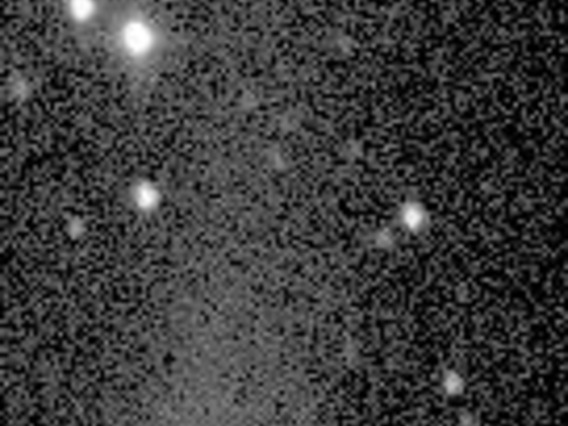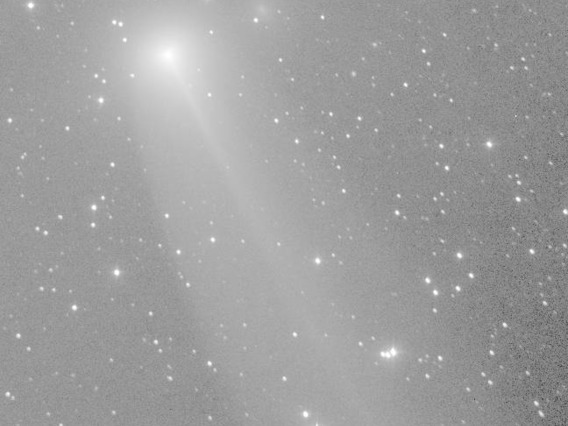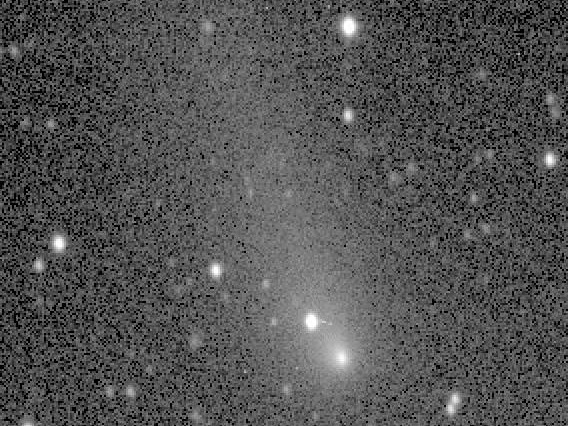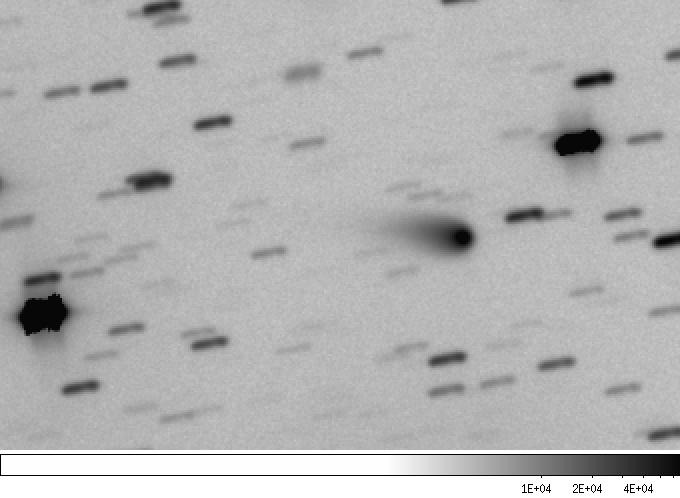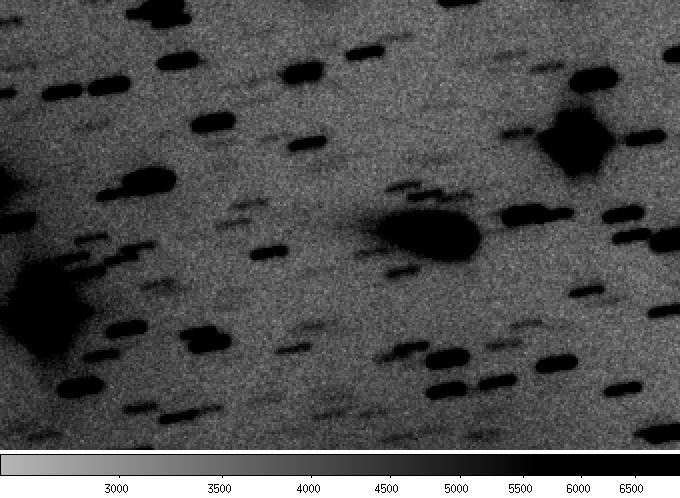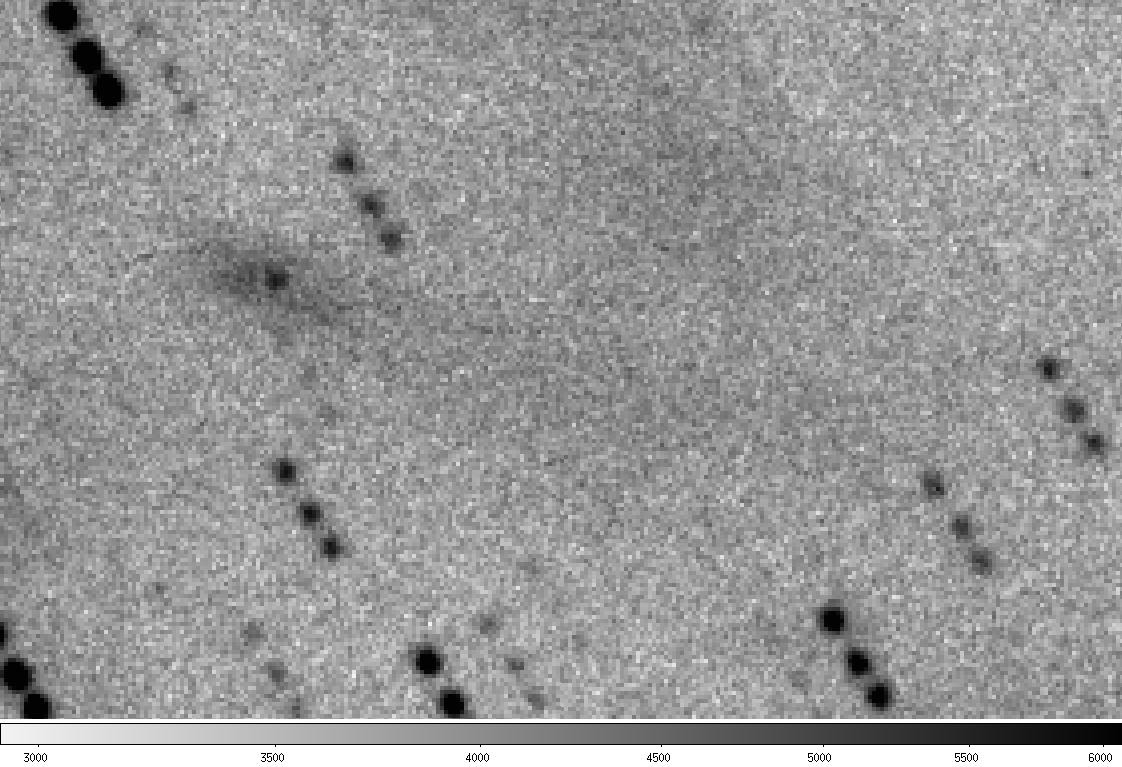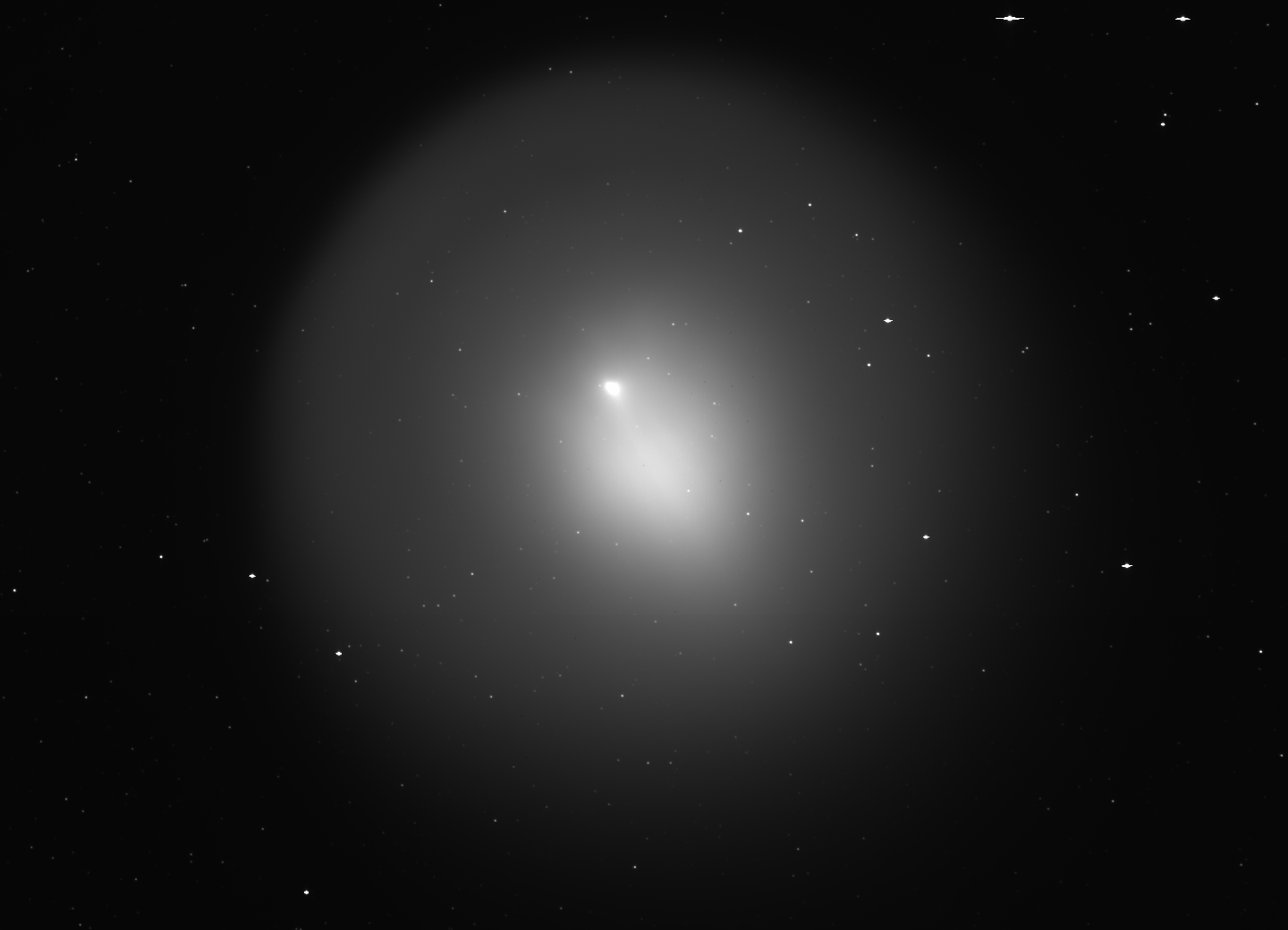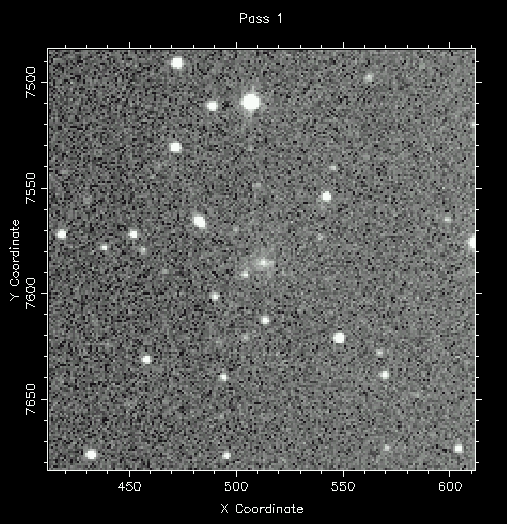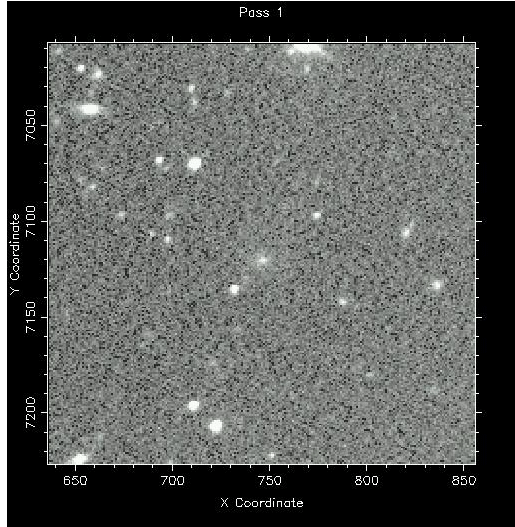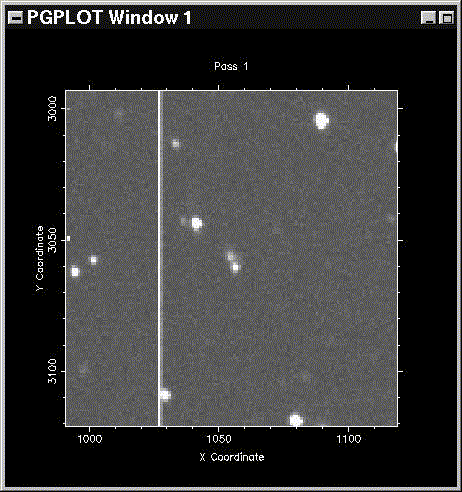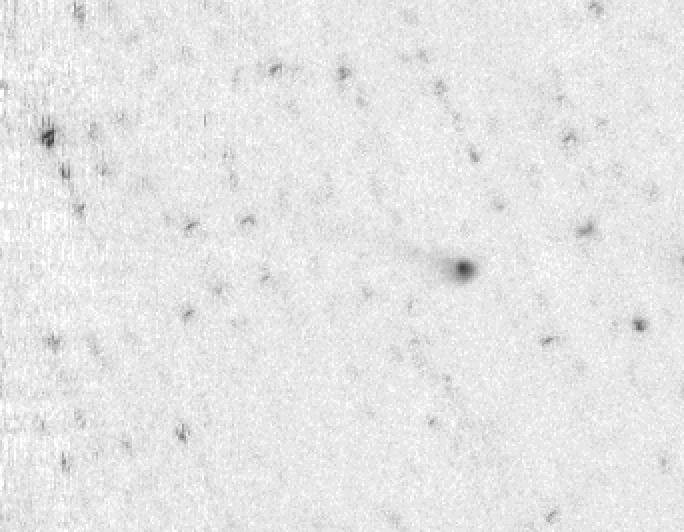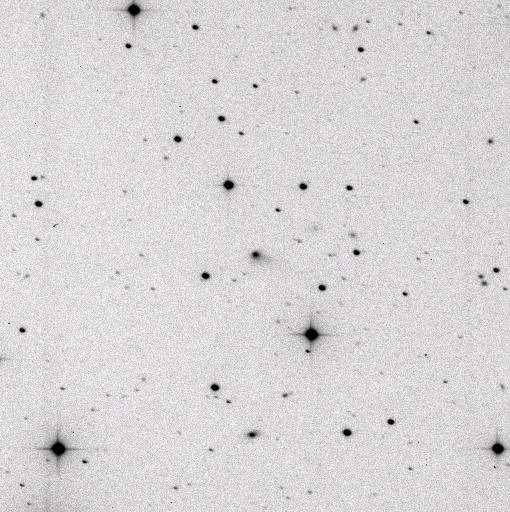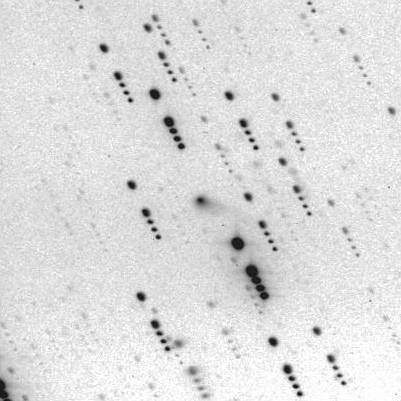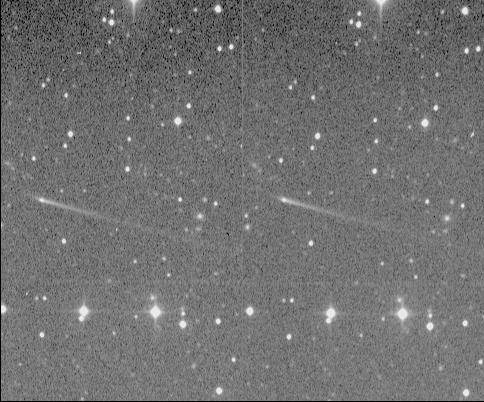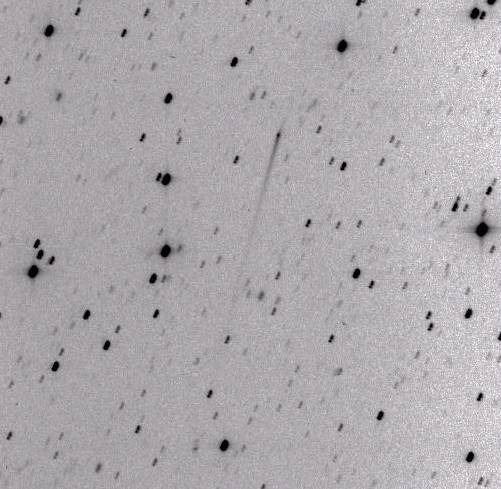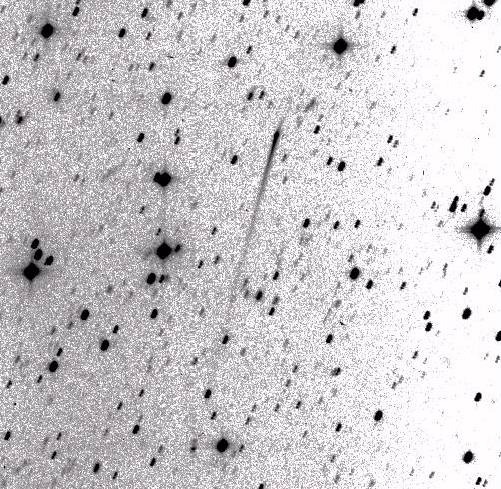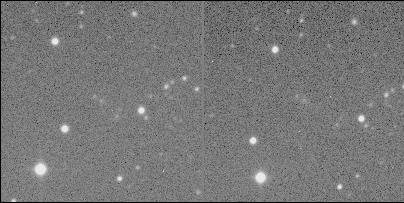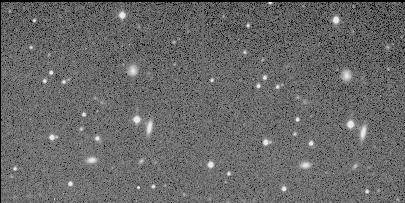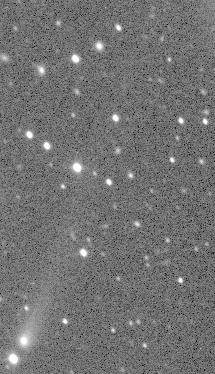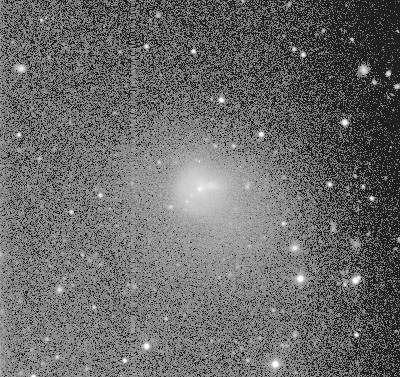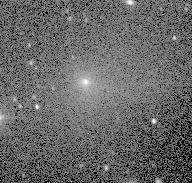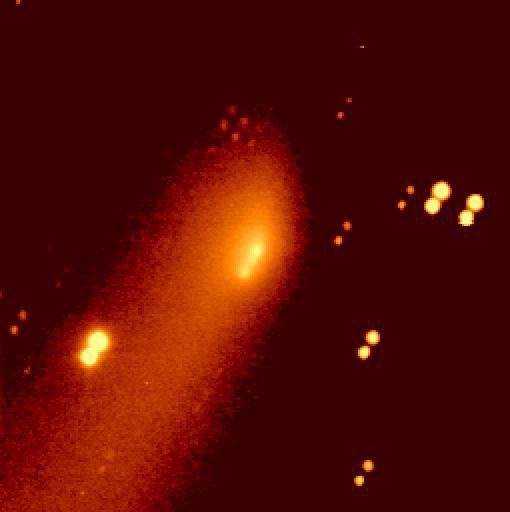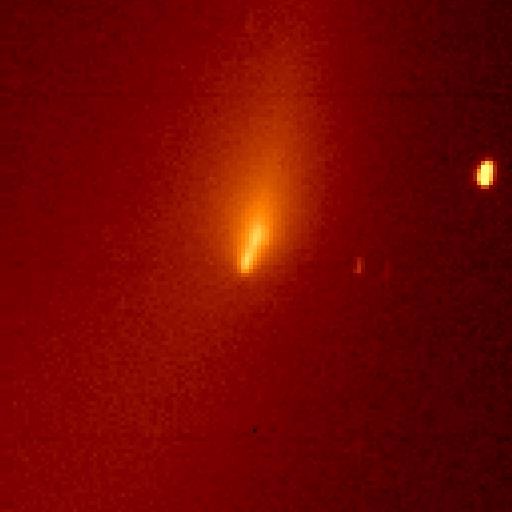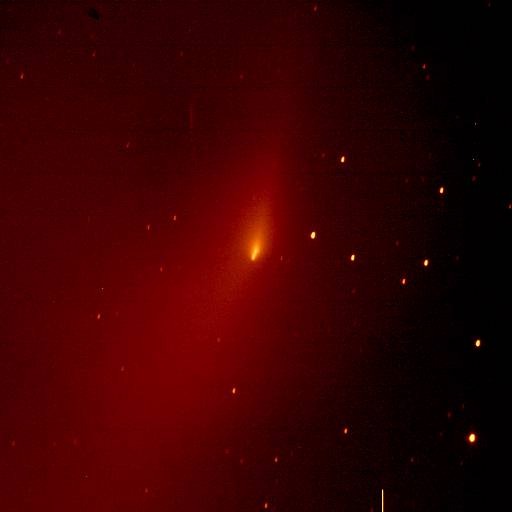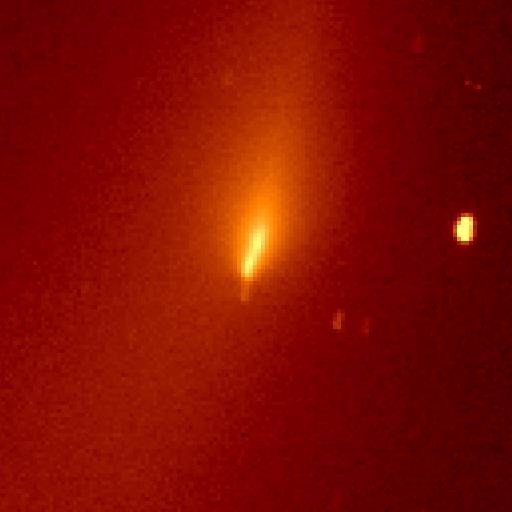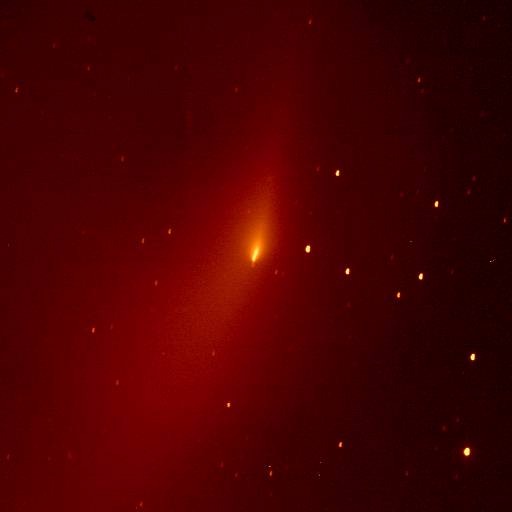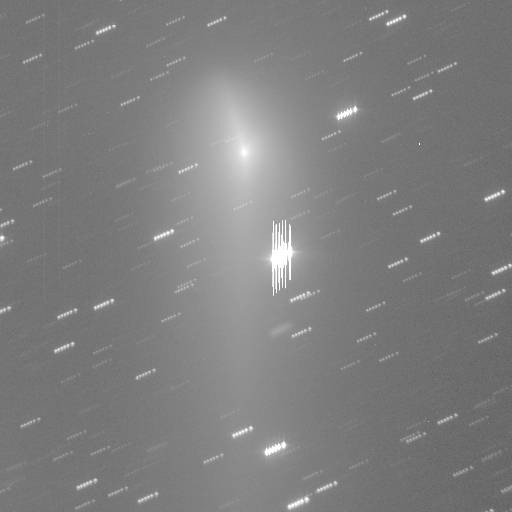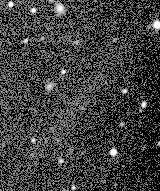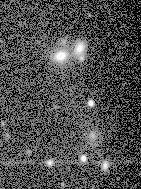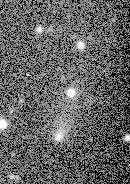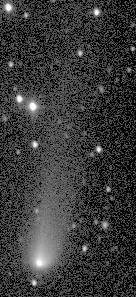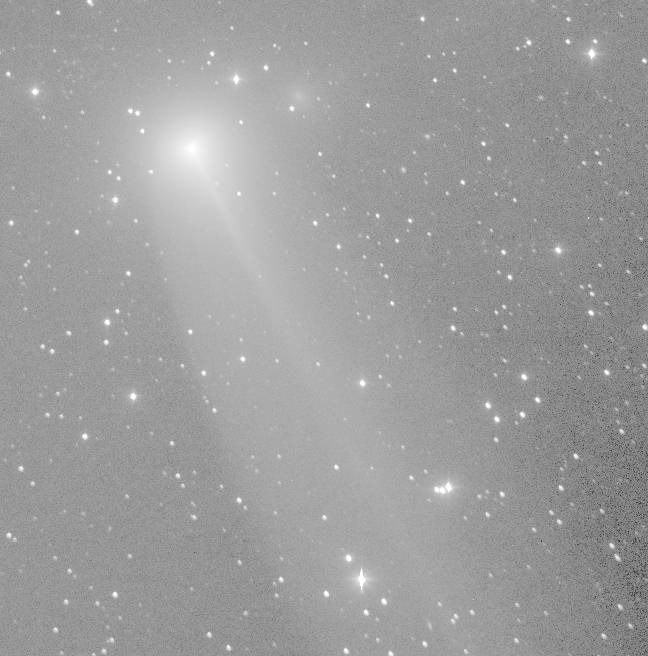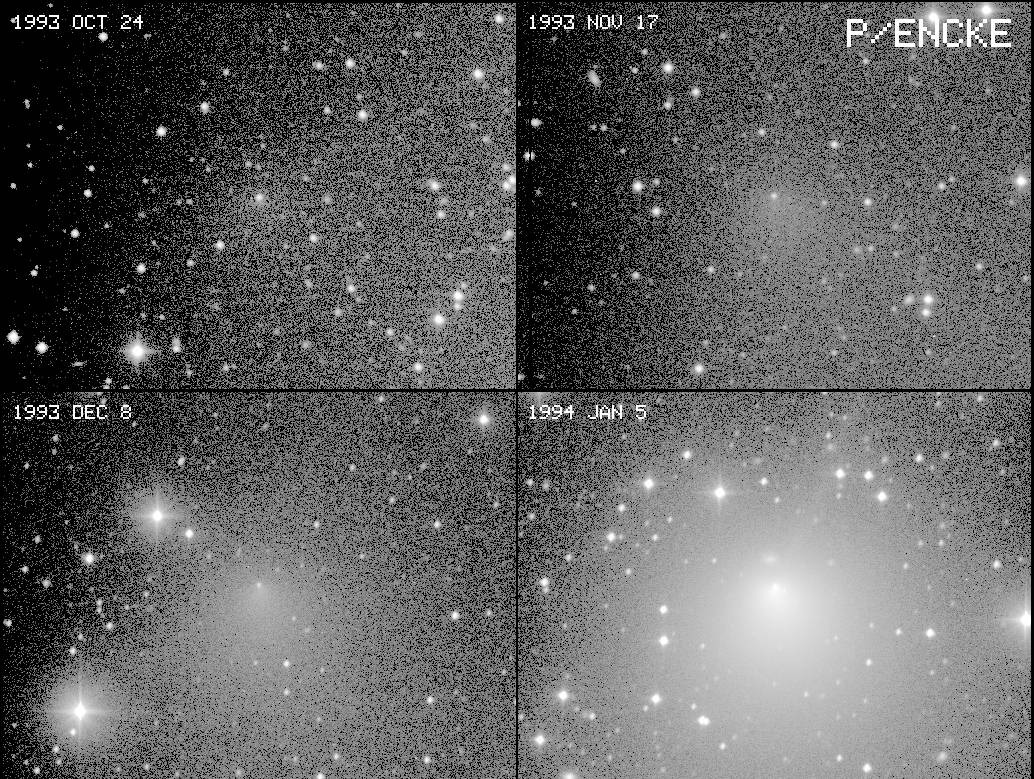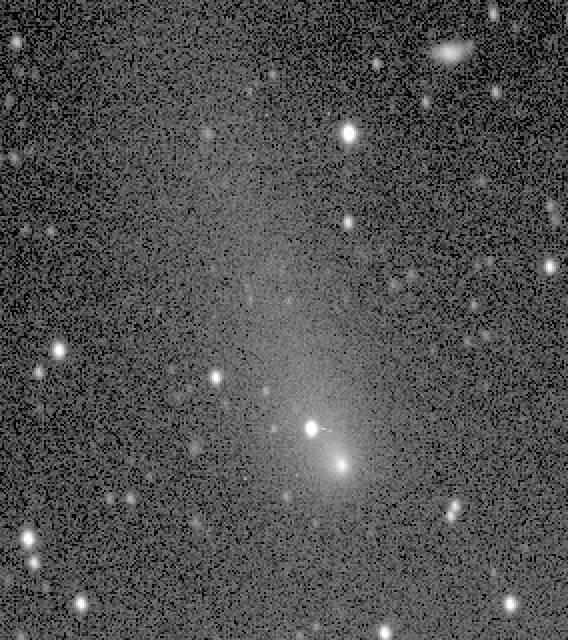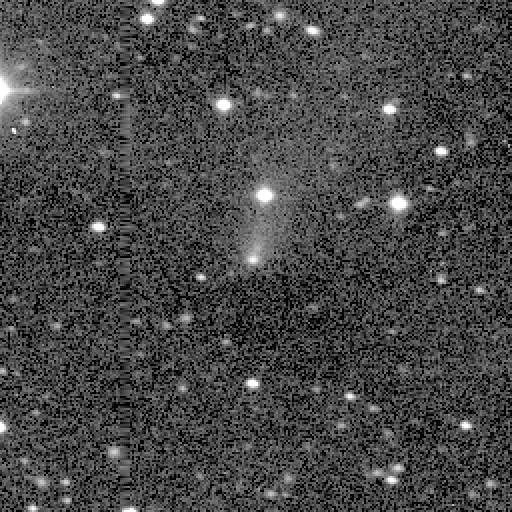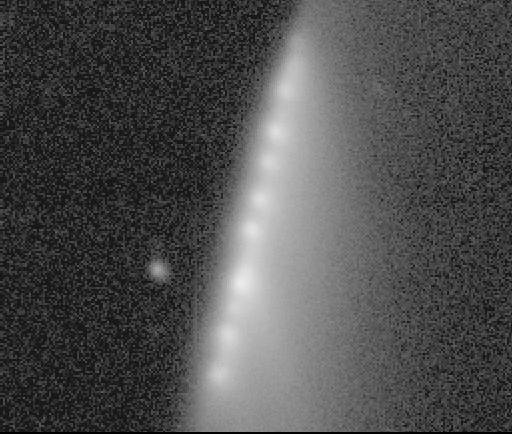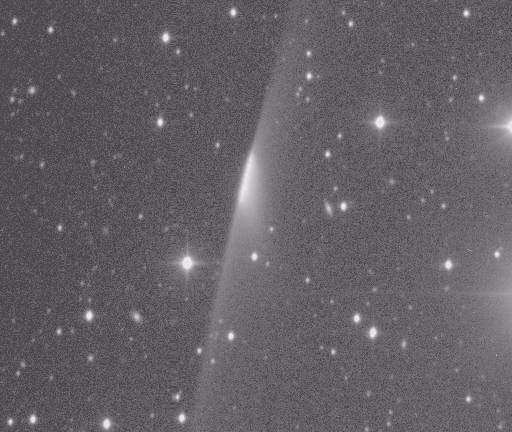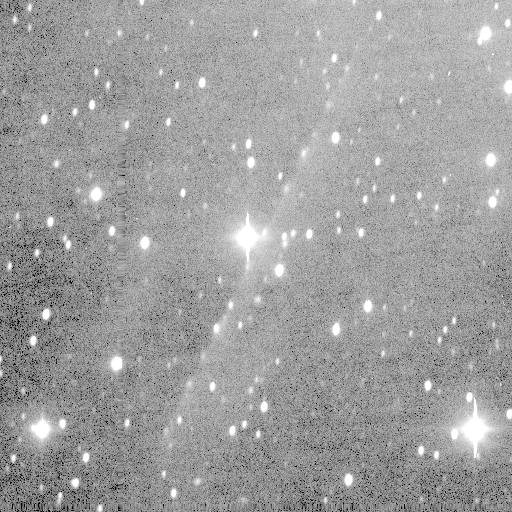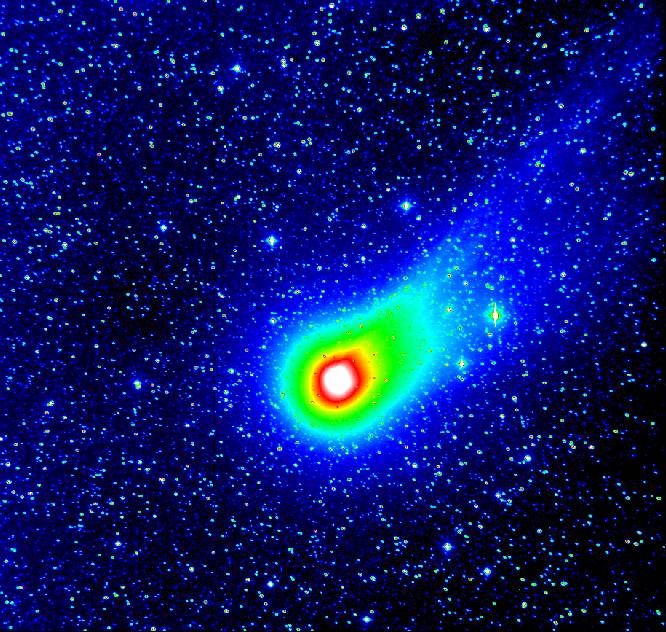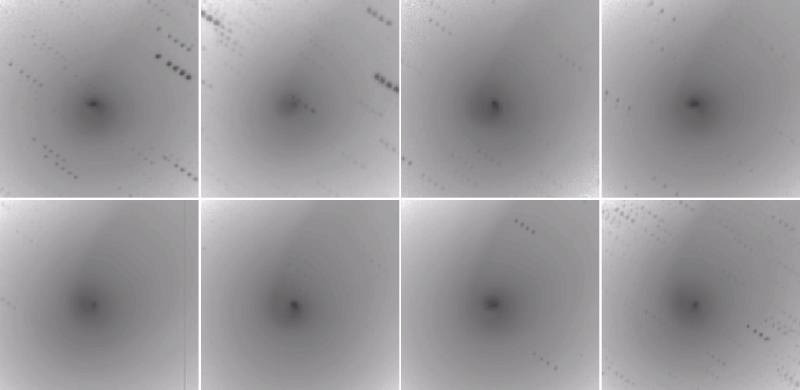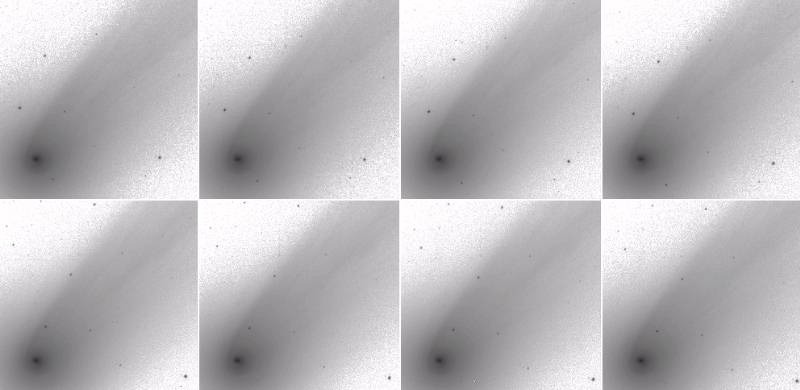SPACEWATCH® has observed and discovered many comets since our early observing programs first started in 1984.
Here are some highlights (newer images are generally towards the top of the page). Click on image to expand to full size:

Comet C/2012 S1 (ISON) was imaged on 2013 March 5 by Jim Scotti at the SPACEWATCH® 1.8-m telescope. Comet ISON is expected to put on a good show in late 2013 when it passes 0.012 AU from the Sun in November and if it survives that close approach, it will fly over planet Earth at only 0.4 AU and put on a show for us Earthlings. The comet has recently started growing a tail that is visible in this image extending more than 0.6 arcminutes to the left (p.a. 96 degrees). East is at left, north at bottom. See the next image for a better view of the fainter parts of the tail.
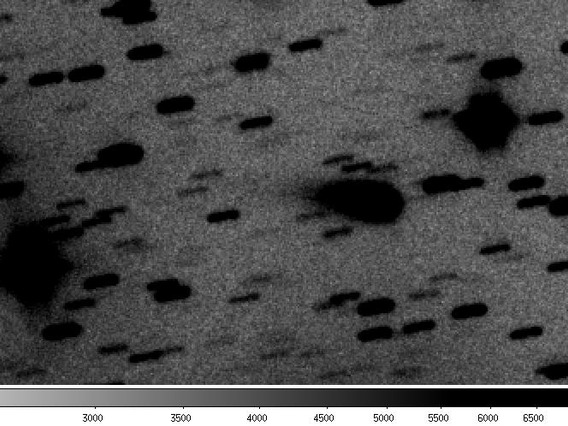
Comet C/2012 S1 (ISON) was imaged on 2013 March 5 by Jim Scotti at the SPACEWATCH® 1.8-m telescope. This alternate view of the previous image shows the fainter tail extension out to almost a full arcminute.
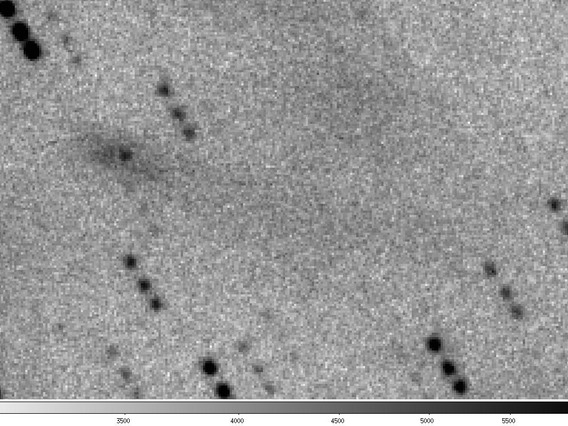
Comet 48P/Johnson was observed on 2013 February 6 while showing some unusual structure seen in this negative image obtained by Jim Scotti with the SPACEWATCH® 1.8-m telescope. This image is the sum of 27 - 60 second exposures co-added to show the comets morphology. You can see the relatively sharp nuclear condensation embedded in an elongated almost uniform surface brightness coma and a very faint tail structure to its lower right. This image has north at bottom and east at left. The coma was found to be about 15 arcseconds by 32 arcseconds and the tail extends in two parts to about 1.7 arcminutes towards p.a. 256 degrees and 1.4 arcminutes in p.a. 240 degrees.
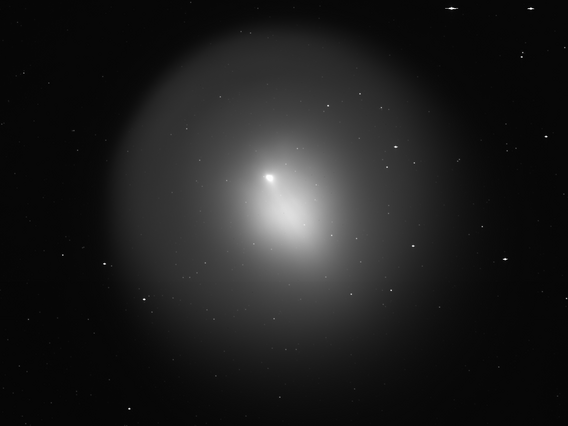
Comet 17P (Holmes) was here photographed in "outburst", becoming suddenly and unexpectedly 1 million times brighter than it was ten days earlier. Image was obtained by SPACEWATCH® observer Mike Read, on 2007, Nov. 4, with the SPACEWATCH® 0.9-m Mosaic telescope. The dust and gas envelope of the comet was then larger on the sky than the apparent diameter of the Moon. Photo by Mike Read; Copyright 2007, Arizona Board of Regents.

C/2003 A2 (Gleason) was the first SPACEWATCH® comet discovery in 2003. It was found at the SPACEWATCH® 1.8-m telescope by Arianna Gleason on 2003 January 10. Observer credit: Arianna Gleason.
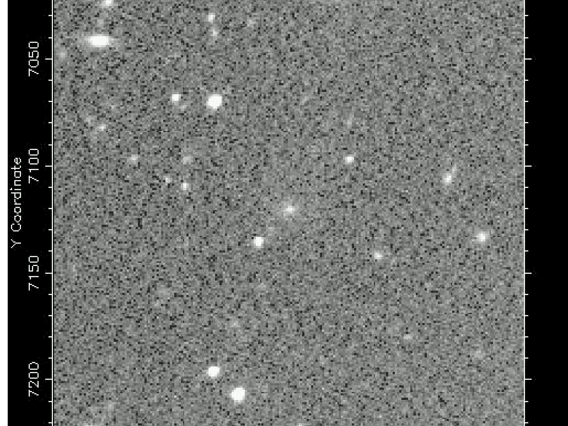
C/2003 A2 (Gleason). The follow up on the SPACEWATCH® 1.8-m telescope by Tom Gehrels on 2003 January 13.
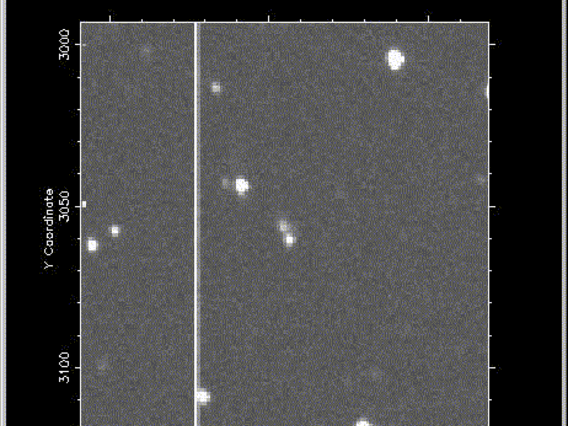
C/2000 A1 (Montani) was the first new comet discovery of the 2000s. It was found at the SPACEWATCH® 0.9-m telescope by Joe Montani on 2000 January 12. Observer credit: Joe Montani.
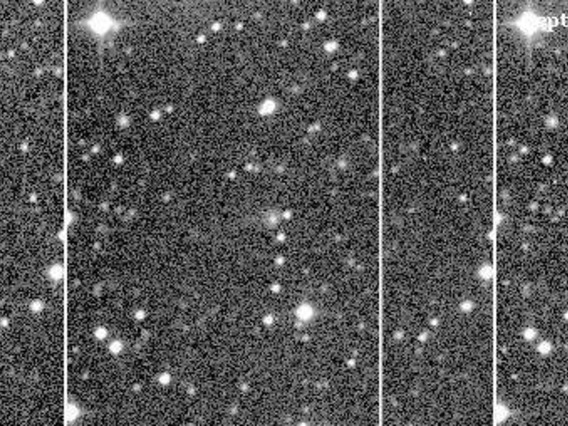
C/1998 M6 (Montani) - This comet was discovered by Joe Montani at SPACEWATCH® on 1998 June 30. This is a series of images showing the motion of the comet over a period of 16 minutes. These observations were made the next night when the comet was near the top of a chain of five stars. The coma diameter is 6-8 arcseconds. A very faint tail is seen with difficulty in the images to the left (South). East in these images is at the bottom. No additional image processing was performed on the images and they appear directly as they then came from the telescope (1998 July 1). Observer credit: Joe Montani.
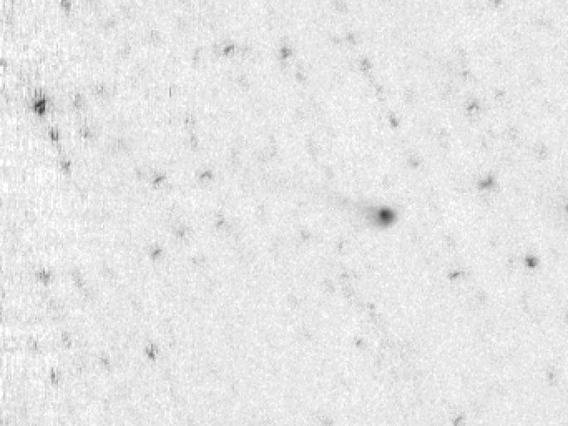
C/1998 M3 (Larsen) - This comet was discovered by SPACEWATCH® observer Jeff Larsen on the night of 1998 June 24. This image is a median combination of the 6 images obtained on the discovery night, with an effective integration time of about 673 seconds. The coma diameter is 15 arcseconds in diameter and the faint tail extends over 2 arcminutes off to the left. This image is 6 arcminutes wide and 4.5 arcminutes tall with North at right and West to the bottom (1998 June 24). Observer credit: Jeff Larsen.
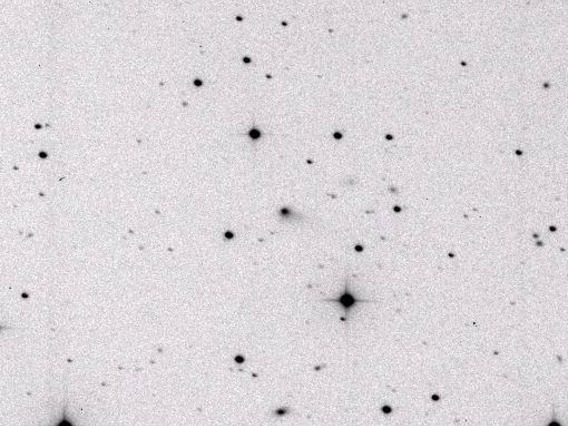
C/1997 V1 (Larsen) - This comet was discovered by SPACEWATCH® observer Jeff Larsen on the night of 1997 November 3. This image is one of the 3 discovery images. The total integration time is just under 2.5 minutes. The comet is total magnitude 16.6 and has a nuclear magnitude of about 19.5. The faint tail was seen to extend 0.89 arcminutes in p.a. 258 degrees and is seen to extend to the right and slightly down. The coma is about 14 arcseconds across. This image is 9 arcminutes square with North at top and West to the right (1997 November 3, 06:29 UT). Observer credit: Jeff Larsen.
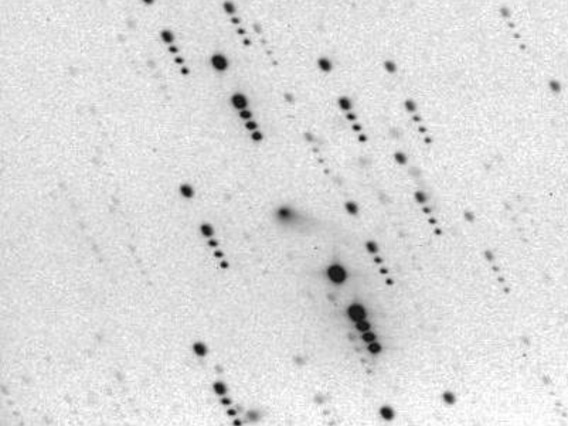
C/1997 V1 (Larsen) - This image is a result of co-adding the 9 images taken on the discovery night, giving a total integration time of about 22 minutes. Compare this image to the one above; this image shows much fainter details in both the coma and the tail. The multiple star images in a row are an artifact of co-adding the images after accounting for the comet's motion. This image is 7 arcminutes square with North at top and West to the right (1997 November 3, 05:27 - 09:02 UT). Observer credit: Jeff Larsen.
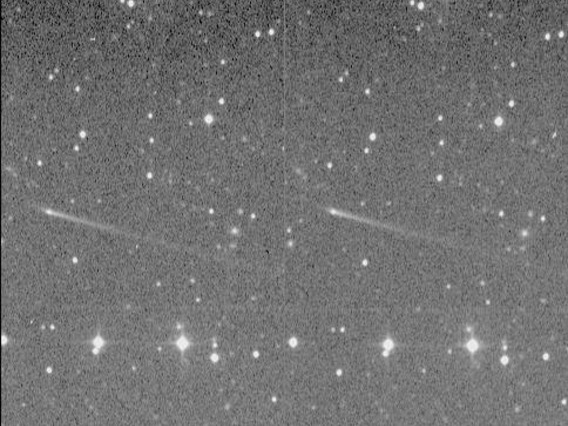
P/1996 N2 (Elst-Pizarro) - This comet orbits entirely within the Main-Belt between Mars and Jupiter, quite unlike all almost all other short-period comets. Interestingly, it has a very narrow and straight tail and a short spike in the opposite direction.; This picture is a stereo pair obtained by Jim Scotti with the 0.9-m SPACEWATCH® telescope. The field of view is 4.22' by 7.02' with North at top and West at right. In order to have the comet appear to float above the background stars in this stereoscopic view (Assuming you don't use the "cross-eyed" method of viewing 3D images), the earlier image is actually on the right.;(1996 September 21)
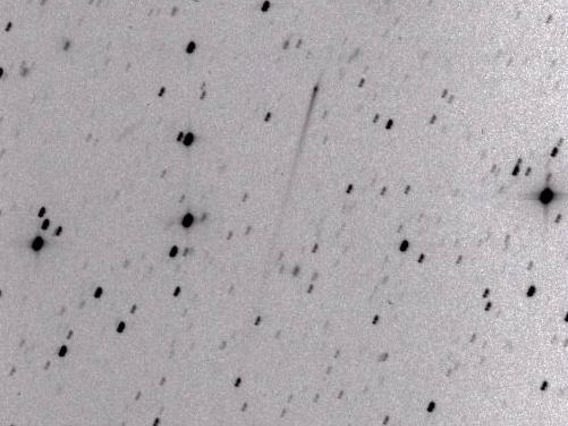
P/1996 N2 (Elst-Pizarro) - This is a co-added image showing the extent of the tails and sharpness of the nuclear region. North is at right, East at top. Field of view is about 9 arcminutes, square. Total exposure time about 445 seconds (1996 September 21). Observer credit: Jim Scotti.
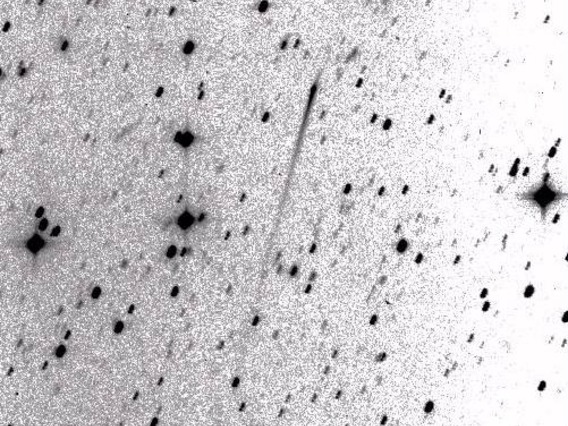
P/1996 N2 (Elst-Pizarro) - The same co-added image, showing the extent of the tails in more detail with a more extreme contrast stretch. Observer credit: Jim Scotti.
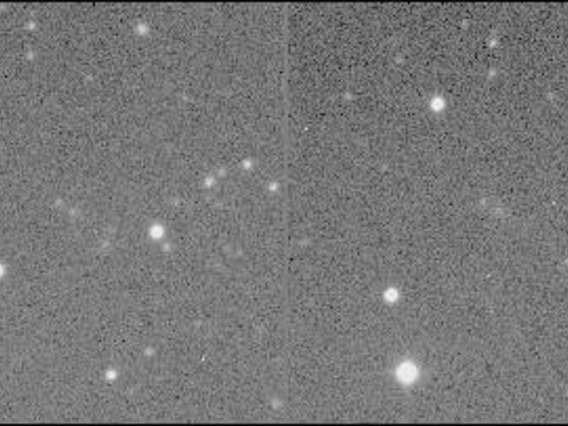
P/Shoemaker-Holt 1 - This image is one of the recovery images of this comet, taken on the 2nd of 3 nights. The comet was found to be split while making its first observed return to perihelion since being discovered in 1987. The stereo pair was taken by Jim Scotti with the 0.9-m SPACEWATCH® telescope. The field of view is 3.5' square with North at top and West at right. Also note the relatively bright asteroid below and left of the center of the images. (1996 September 20)

P/Shoemaker-Holt 1 - The same comet, a night later. The stereo pair was taken by Jim Scotti with the 0.9-m SPACEWATCH® telescope. The field of view is 3.5' square with North at top and West at right. (1996 September 21)
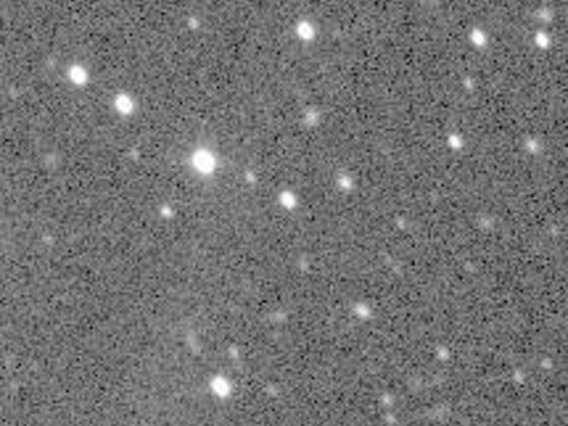
C/1996 A1 (Jedicke) - This is the 3rd image of a new 17th magnitude comet discovered on the night of 1996 January 14 by Robert and Vicky Jedicke with the SPACEWATCH® Telescope. In the first image, the nucleus of the comet was very close to the star that is just below and left of the comet. North is to the right, and East at top in this image. The coma is about 20 arcseconds in diameter and the tail extends to at least 5 arcminutes (1996 January 14, 07:36 UT). Observer credit: Rob Jedicke.
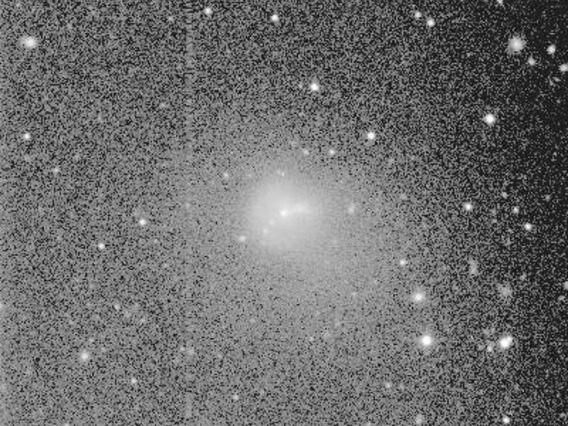
29P/Schwassmann -Wachmann 1 - The comet is in outburst with a jet-like feature extending to the North (the right) in this image (1995 November 14). Observer credit: Jim Scotti.

29P/Schwassmann -Wachmann 1 - A month and a half later... The activity level has reduced since the image obtained on November 14, above (1995 December 31). Observer credit: Jim Scotti.
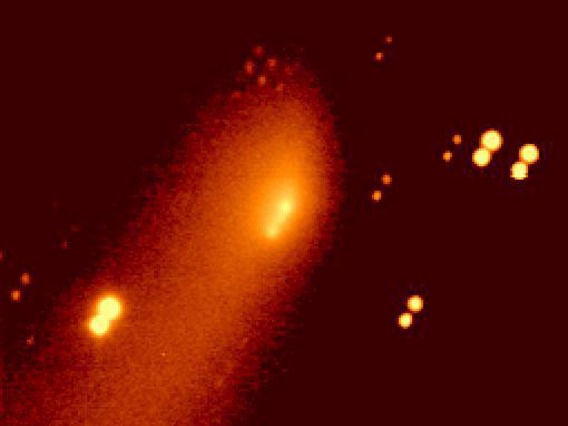
P/Schwassmann -Wachmann 3 - This image taken by Jim Scotti clearly shows 3 individual nuclei in this recently split comet. Compare the next set of images to this one which was co-added from 2 consecutive images obtained with the SPACEWATCH® Telescope on Kitt Peak. The image is 4.5 arcminutes square with North at right and East at the top. (1996 January 19)
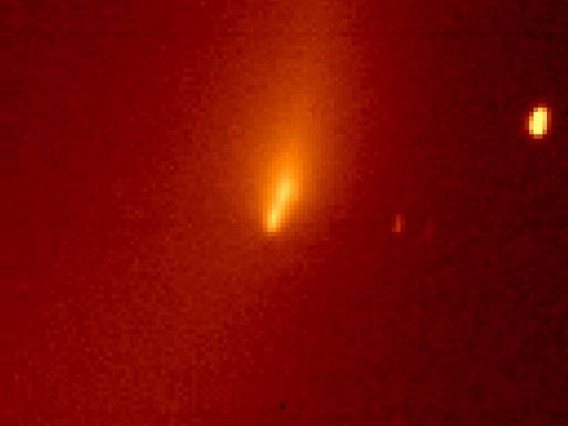
P/Schwassmann -Wachmann 3 - These image pairs are of P/Schwassmann-Wachmann 3, taken with the 0.9-m SPACEWATCH® telescope by Jim Scotti. The left image is a closeup of the nuclear region, showing at least 2 individual nuclei in the recently split comet. The right image shows more of the comet including a complex inner coma/tail structure. The lower pair of images are the same, but taken about 7 minutes later than the first. The left images are about 2.2 arcminutes square while the right images are about 9 arcminutes square. North is at right, East is at top in each. (1995 December 27, 01:34:23 UT (upper) and 01:45:45 UT (lower) )
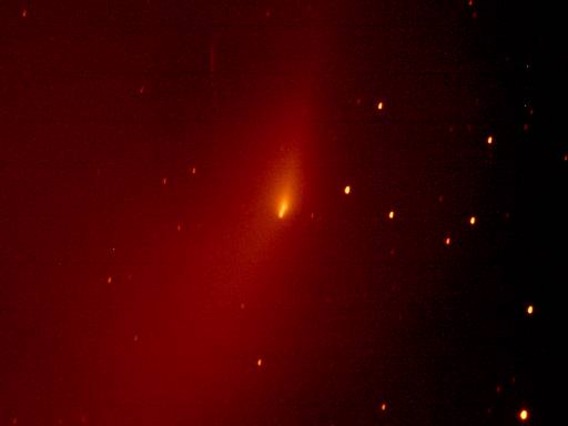
P/Schwassmann -Wachmann 3 - These image pairs are of P/Schwassmann-Wachmann 3, taken with the 0.9-m SPACEWATCH® telescope by Jim Scotti. The left image is a closeup of the nuclear region, showing at least 2 individual nuclei in the recently split comet. The right image shows more of the comet including a complex inner coma/tail structure. The lower pair of images are the same, but taken about 7 minutes later than the first. The left images are about 2.2 arcminutes square while the right images are about 9 arcminutes square. North is at right, East is at top in each. (1995 December 27, 01:34:23 UT (upper) and 01:45:45 UT (lower) )

P/Schwassmann -Wachmann 3 - These image pairs are of P/Schwassmann-Wachmann 3, taken with the 0.9-m SPACEWATCH® telescope by Jim Scotti. The left image is a closeup of the nuclear region, showing at least 2 individual nuclei in the recently split comet. The right image shows more of the comet including a complex inner coma/tail structure. The lower pair of images are the same, but taken about 7 minutes later than the first. The left images are about 2.2 arcminutes square while the right images are about 9 arcminutes square. North is at right, East is at top in each. (1995 December 27, 01:34:23 UT (upper) and 01:45:45 UT (lower) )
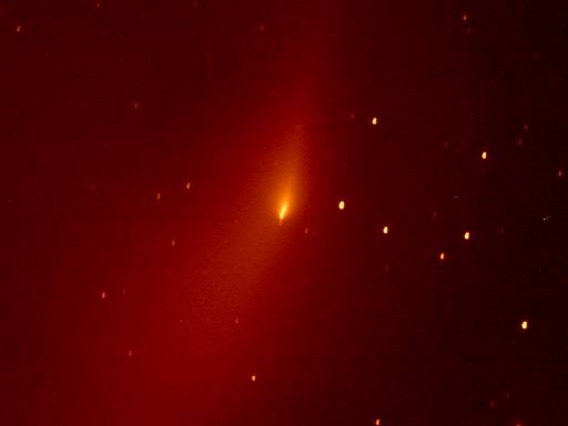
P/Schwassmann -Wachmann 3 - These image pairs are of P/Schwassmann-Wachmann 3, taken with the 0.9-m SPACEWATCH® telescope by Jim Scotti. The left image is a closeup of the nuclear region, showing at least 2 individual nuclei in the recently split comet. The right image shows more of the comet including a complex inner coma/tail structure. The lower pair of images are the same, but taken about 7 minutes later than the first. The left images are about 2.2 arcminutes square while the right images are about 9 arcminutes square. North is at right, East is at top in each. (1995 December 27, 01:34:23 UT (upper) and 01:45:45 UT (lower) )

19P/Borrelly - Comet Borrelly. A very bright, distinct object (1994 December 9). Observer credit: Jim Scotti.

19P/Borrelly - Over a year later... It has all but vanished. The comet is the very faint tail running diagonally from lower left where the very faint nucleus is located to the top right. The nuclear region is about total magnitude 22. Compare this to the image of the comet obtained earlier when it was near its peak activity, above (1995 December 31). Observer credit: Jim Scotti.
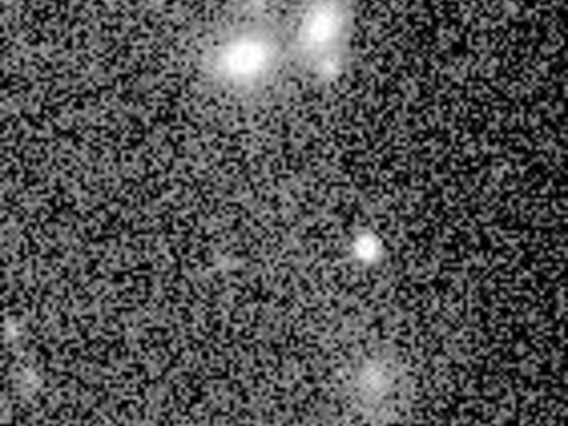
71P/Clark - The comet is the diffuse object of total magnitude 19.0 on the lower right above a star and a faint galaxy, with a faint tail extending to the upper left (towards the two brighter galaxies). (1995 December 31)
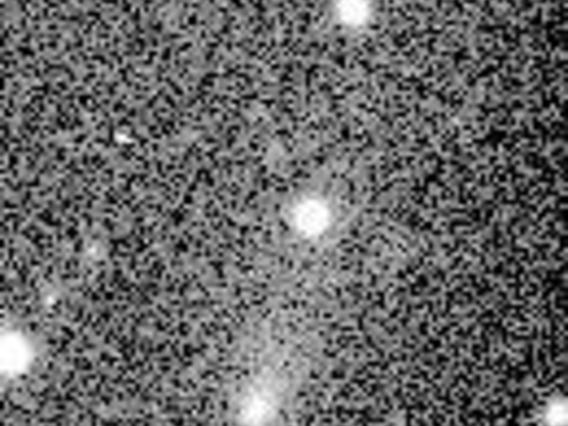
30P/Reinmuth 1 - The total coma magnitude of this comet was found to be about 17.3, while the nuclear magnitude was much fainter at 21.5. (1995 December 31)
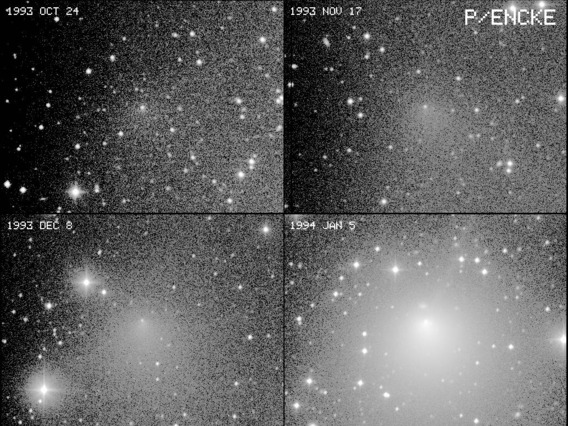
P/Encke - Comet Encke. A mosaic of images from 4 consecutive lunations during the comet's 1994 apparition.
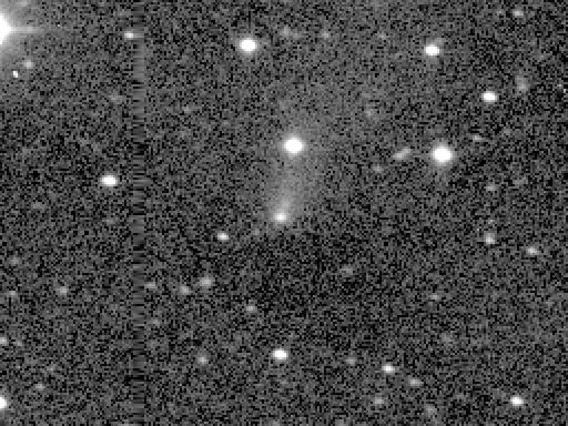
C/1994 G1 (Takamizawa-Levy) - Note that this comet has split. The faint secondary nucleus is just above the brighter principal nucleus.
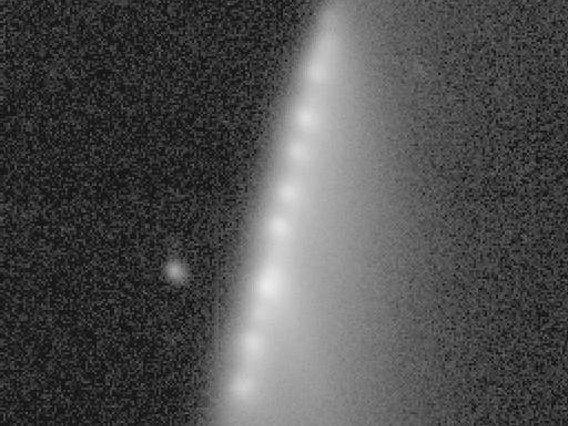
D/1993 F2 (Shoemaker-Levy 9) - Image obtained with the Steward Observatory 2.3-m telescope on Kitt Peak by Wieslaw Z. Wisniewski, showing the nuclear train shortly after its discovery. (1993 March 28)
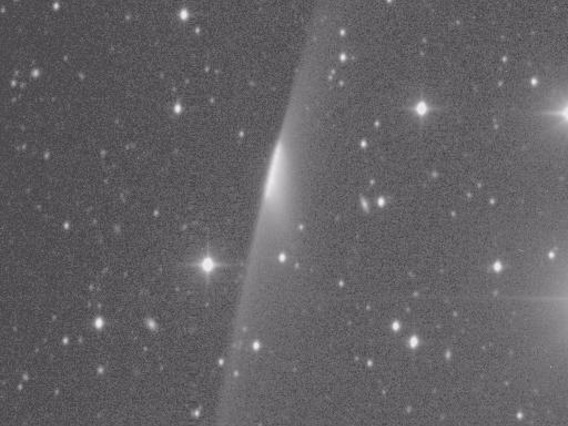
D/1993 F2 (Shoemaker-Levy 9) - Image obtained with the SPACEWATCH® Telescope of the famous Shoemaker-Levy 9 comet, showing the nuclear train with individual tails and the dust wings shortly after discovery. (1993 March 30)
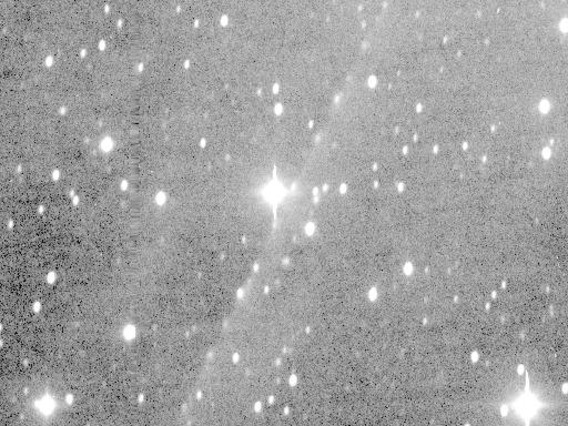
D/1993 F2 (Shoemaker-Levy 9) - A year later. This image, obtained with the SPACEWATCH® Telescope, shows the nuclear train, now spread considerably and the dust wings nearly invisible. This is one month before impact in July 1994. (1994 June 16)

109P/Swift-Tuttle - This is a false color image of comet Swift-Tuttle obtained with the SPACEWATCH® Telescope. (1992 November 24). Observer credit: Jim Scotti.
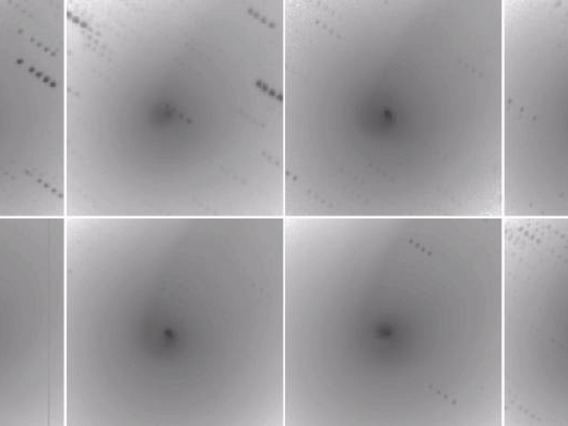
109P/Swift-Tuttle - This is a mosaic of images from 8 consecutive nights, showing the night-to-night changes in the inner coma of the comet. Notice that every 4th image, 3 days apart bear striking similarity, demonstrating the rotational period of the nucleus which is just under 3 days! (1992 November 25 - December 2). Observer credit: Jim Scotti.

109P/Swift-Tuttle - This is a mosaic of images, showing rapid motion of features in the gas tail over the course of about a half hour. (1992 December 1). Observer credit: Jim Scotti.


